People
Designers Mauricio Guerrero and Brian Butterfield on Giving Back to Mexico by Way of Art and Design
This is part of a special series of Creative Conversations focused on Mexico’s contemporary art, design, and culture.
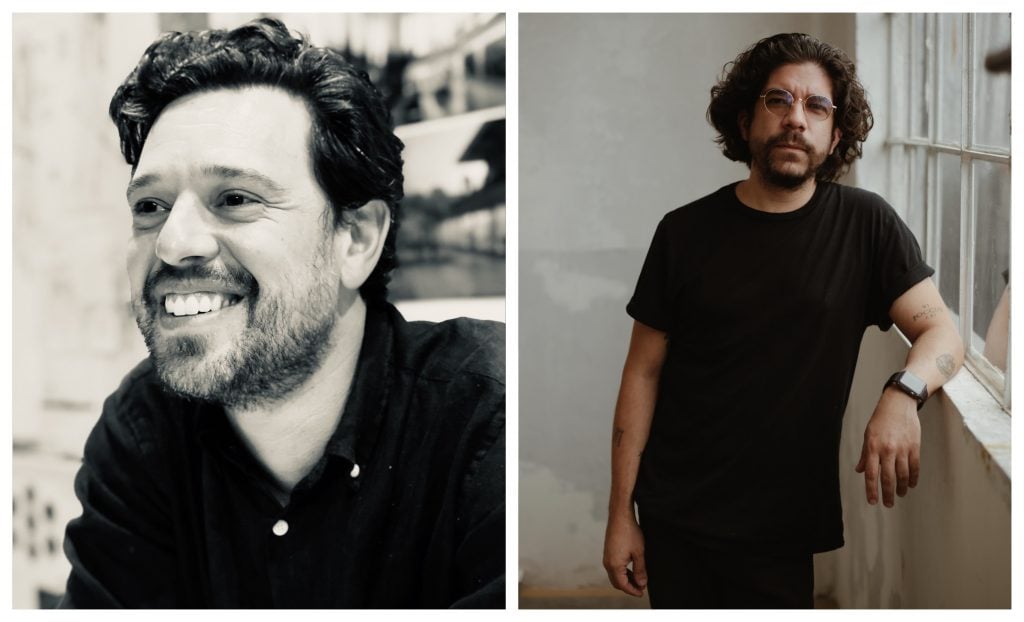
This is part of a special series of Creative Conversations focused on Mexico’s contemporary art, design, and culture.

As one third of La Metropolitana, Mexico City’s heritage-based furniture and interiors atelier, Mauricio Guerrero has designed for some of Mexico’s splashiest hospitality projects (see Contramar restaurant and Noma’s 2017 pop-up in Tulum) while focused on creating employment opportunities for locals. Recently, with partners Alejandro Gutiérrez and Rodrigo Escobedo, he has also been merging art and design to comment on sociopolitical issues in Mexico today.
Previously the manager of exhibition design at the Metropolitan Museum of Art in New York, Brian Butterfield is now the director of the Museums Workshop at Why Architecture in Los Angeles. With Why, he looks to the future as well as the past to re-contextualize art ecosystems with their communities in mind, from The Met to the Academy Museum of Motion Pictures, the Marciano Art Foundation, and the Institute of Contemporary Art (I.C.A.) in L.A.
During Miami Art Week, the two connected for the first time to discuss design as problem solving, the merits of creative failure, and their responsibility to the public in Mexico and beyond.

La Metropolitana designed Noma’s pop-up restaurant in Tulum. Courtesy of La Metropolitana.
Initially, what made you pursue a creative career?
Mauricio Guerrero (M.G.): Okay, Brian? [Laughs.]
Brian Butterfield (B.B.): I always give a cop-out answer to that question, but design is the only thing I’ve ever tried to do. Throughout my career, I’ve realized how naïve I was as a high-school student wanting to be an architect, but I was always drawn to the act of making—whether it’s with your hands, like with furniture, or with architecture, where it’s with both your hands and your ideas, translated by others into something that didn’t exist before.
Artists also do that, but designers make something for its functional use, even if it’s not a functional piece. That aspect of problem solving was something I was drawn to; it can be aesthetic or a statement, too, but, ultimately, it’s about solving a problem and its inherent complexity.
Mauricio, your studio is based in Mexico City, and you’ve executed projects all over the country. How did you get started?
M.G.: My answer would be similar to Brian’s, actually: You start creating reasons and solving problems [in order to make what you want to make]—that’s what a designer tries to do.
When we [founders Guerrero, Alejandro Gutiérrez, and Rodrigo Escobedo] finished university, we first opened La Metropolitana to focus on architecture, industrial design, graphic design, and interior design. We wanted to open an office that solved problems in a 360-degree sort of way, and at that moment, a place like that didn’t exist for people here.
We started out doing design for museums, and our first pitch was for Mexico City’s National Museum of the Revolution. We won the bid, and after that we started doing what we wanted to do through our own capabilities—through creating our own factory and investing in our own machinery. For us, we wanted to be a creative office that produces our own things for people to have better things, made by better design.
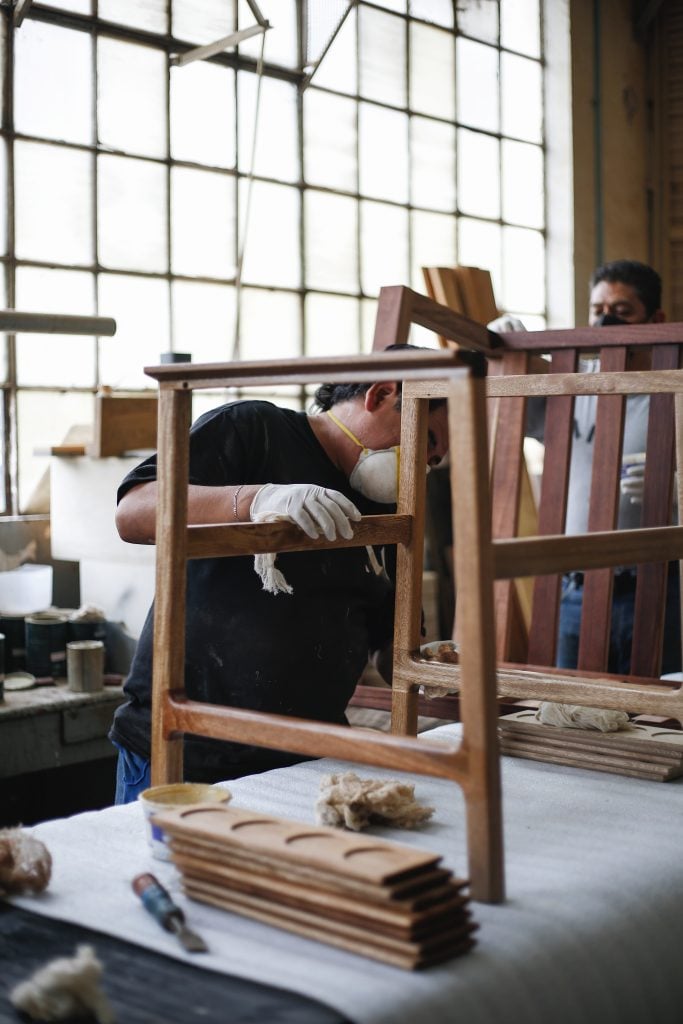
Inside a La Metropolitana factory. Courtesy of La Metropolitana.
How much do you feel a responsibility to the public in terms of design?
M.G.: Our main mission right now is helping the people who are working with us. 75 of our 90 employees work in our factory, and we discovered that even though they’re here in Mexico City, many of them are supporting families in smaller towns four, five hours’ drive away. So we started fabricating in a way where we could put small factories in their own towns. We now distribute work to those satellite factories where these workers can be close to their families.
We’re trying to help the people we can through our design. In the 11 years since we’ve opened the company, I can now say that I studied design for doing this—for helping people and improving their quality of life.
B.B.: Museums can be a lot of different things today. If it’s about making art available to the public, then it’s meant to be enjoyed. Your job as an architect is facilitating a more transcendent experience, or even a more efficient experience.
Museums are now thinking of themselves as 24-hour institutions. How can they give back to your community at night? What do they do 365 days a year? Sometimes they need new galleries to re-present their material to the public, or maybe the answer is more on the operational side, but the question is, how does your building tie into your mission?
Mauricio, I love how you recognize the value of your company to your employees. I do think there is an ethical imperative to this work; it can also be an individual one. Working with an institution, you have to marry your ethics as a designer to their ethical concerns or predicaments. These places can’t instantly change, even though we live in a time of ever-increasing expectations for change. Your client isn’t just the person who’s paying the bills.
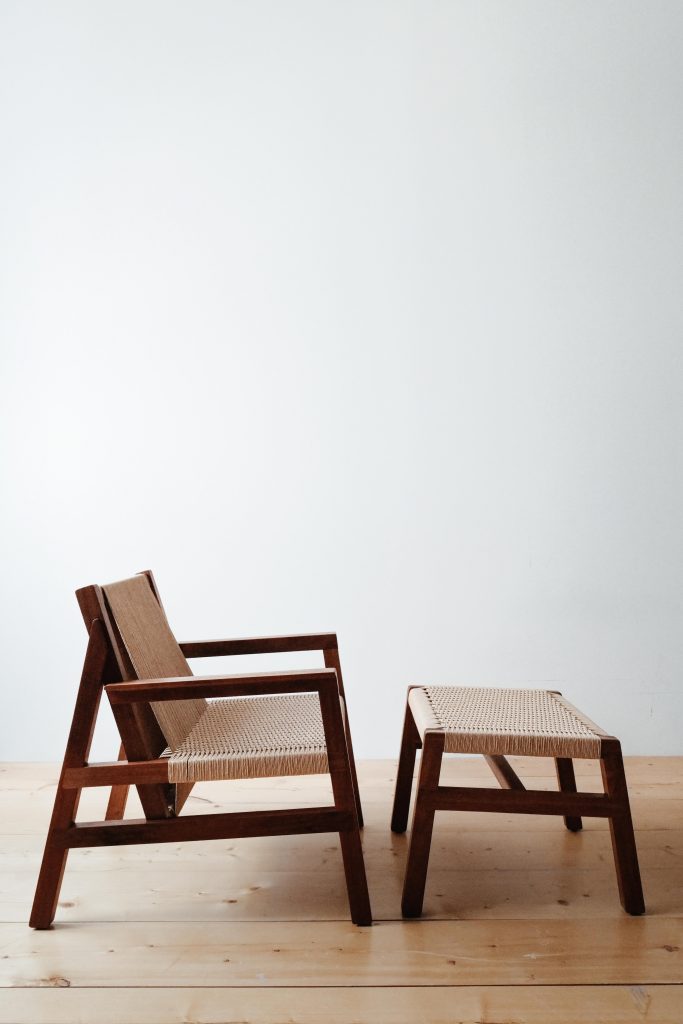
A design from La Metropolitana. Courtesy of La Metropolitana.
M.G.: Whether you’re showing your work in a museum or a showroom, you’re still trying to express your values and doing your best to replicate your principles in what you’re making. Right now, we’re employing 75 or so people, but maybe we can help 400 people with work; it’s still not enough.
We’re trying to show that, through spaces or products, people can change things and not only think about money or producing another beautiful chair. We have enough beautiful chairs, no? We have to bring value to both the people who make them and the people who buy them and the people who sit in our chairs to make change that way.
You also have used design as well as art to address these concerns more candidly. Can you tell us about Our Land is Full of Bones?
M.G.: In 2017, we did an installation in Marfa for Anónimo [Colectivo, a contemporary art platform founded by Alejandra Martínez, who has also served as Maestro Dobel Artpothecary’s creative director since 2021] about the women in Juárez who were victims of local drug wars. It was our way of paying tribute to the victims.
We made about 150 human bones carved from wood, representing the number of women killed [in one month] in that region. We built totems of carved wood and burned them, and all these bones were piled up into one room. Some people thought that we were using real bones.
It was an amazing experience being in Marfa and creating that—our second or third artwork. Art and design merge a lot now, so we’re trying to make statements that way in our work, too.
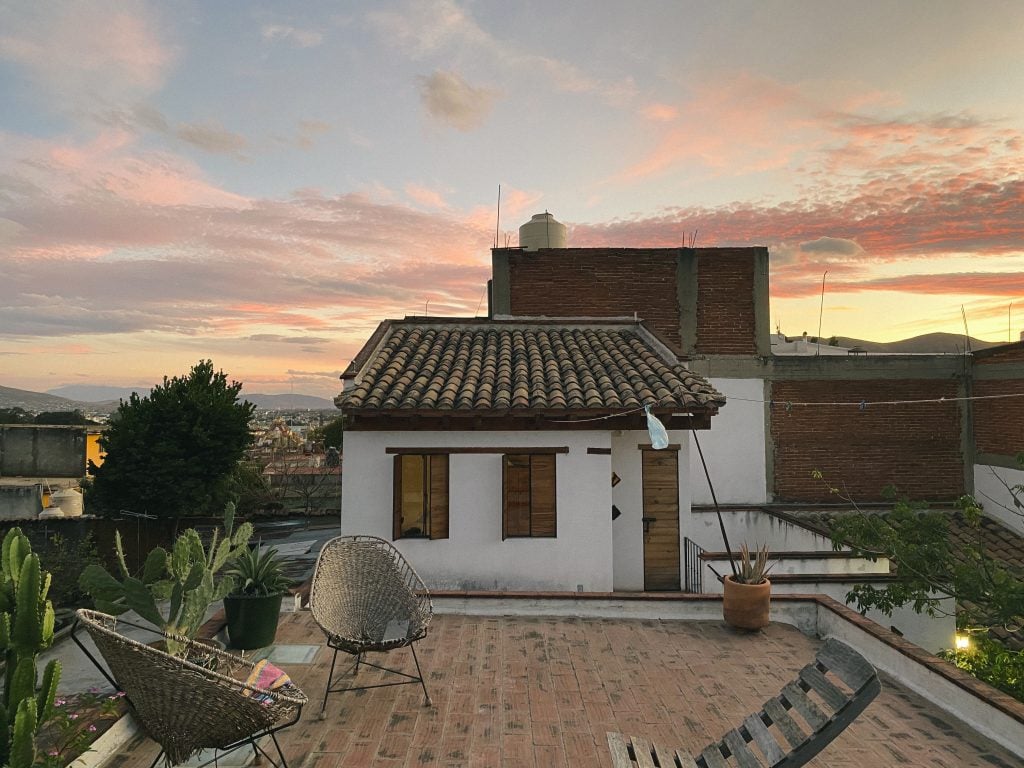
At Pocoapoco in Oaxaca, where Butterfield was a resident. Photo: Aileen Son.
Brian, you were a resident at the Pocoapoco art residency program in Oaxaca, which Maestro Dobel has supported for the past two years through this partnership. Can you tell us a little bit about your experience there?
B.B.: I was drawn to Pocoapoco because it focuses on being there physically, even though a majority of the residents were not from Oaxaca, or even necessarily from Mexico. It was important to see how local artisans are connected to that place, whether through craft or local materials or food or the local art scene.
I was really interested in Francisco Toledo’s role as an artist in creating institutions and legacy through the architecture of spaces. [The Zapotec Breakaway Generation artist known as “El Maestro” co-founded the Museo de Arte Contemporáneo de Oaxaca (MACO) and an art library at the Instituto de Artes Gráficas de Oaxaca (IAGO), among other local institutions.] That’s what it was for me—seeing how institutions, big and small, create and give back to the community and act as cultural energy centers. These things are condensed in the Oaxaca Valley in terms of culture, craftsmanship, the number of languages spoken—they preserve and celebrate that there.
Ironically, I went there to write about The Met in New York, where we were renovating the galleries of the Americas. I hadn’t had the time to put pen to paper and write about the role of design within a museum context. The Met originally presented works from Mexico as primitive objects—the collection was even called the Department of Primitive Art—whereas now museums acknowledge the artists individually and [how] the cultures that created them are living cultures today, not only in dialects but also in artistic traditions, something that is very obvious somewhere like Oaxaca.
Of course, as soon as I got to Oaxaca, all I wanted to do was explore, but I ended up getting such an interesting perspective on that project there.
M.G.: Was it your first time there?
B.B.: No, I’ve been there many times, but the residency was the first time I had done anything close to work there. Mexico is home to a lot of incredible architects, I like going there to see what everybody else is doing.
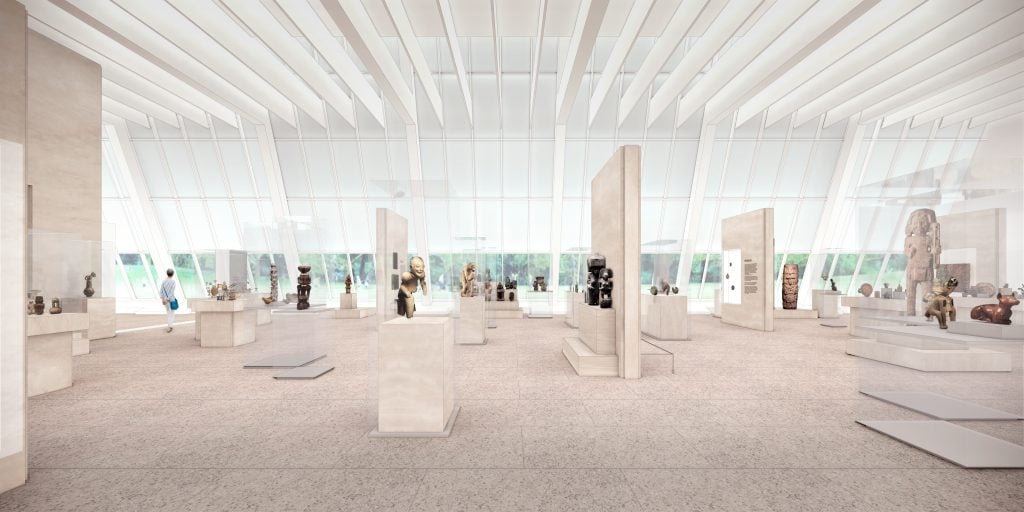
A rendering of the Americas gallery that Why Architecture is redesigning at The Metropolitan Museum of Art. Courtesy of Why.
Can you talk about your creative process?
M.G.: Every project is different; you have to think of the project as a whole, for sure. We don’t have a specific process, but we have a lot of different artistic and creative exchanges. It all comes down to conversations and understanding others’ visions.
B.B.: I remember studying [at the Danmarks Designskole] in Copenhagen, where we were given an exercise in the woodshop on the first day of class: You had one day to make a chair, which is impossible. 19 out of the 20 students couldn’t even sit in [theirs].
I created my own version of that when I taught furniture design at Yale: teams of three would get a single sheet of plywood and would have to make a chair together. It’s like a four-hour physics lesson and a four-hour lesson in failure. But I think it makes them better students because they won’t spend six weeks making something perfect on their computer, which then won’t work.
As a designer, giving yourself license to experiment, and the idea of “failing fast,” is interesting. You can let yourself be adventurous, but also figure out what’s going to break pretty quickly. You have to trust your instincts.
We like to say, “Form follows flourishing” instead of “form follows function.” How are you going to create something that is nourishing to the person experiencing it?
Another essential part of [it] is getting all the bad ideas out, right? The creative process is an uncomfortable one where you’ll go to bed frustrated, telling yourself that you should be really good at this by now, but accepting that it’s slow. It’s not about knowing the right answer right away; it’s not a game show.
M.G.: And learning from your mistakes, no? Your experience is remembering the things you did wrong in the past and learning to do it better. In the end, maybe the creative process is just about not fucking things up…this time.
B.B.: Or, at least, just less than last time.
M.G.: Yes, exactly! Just a little bit less this time.